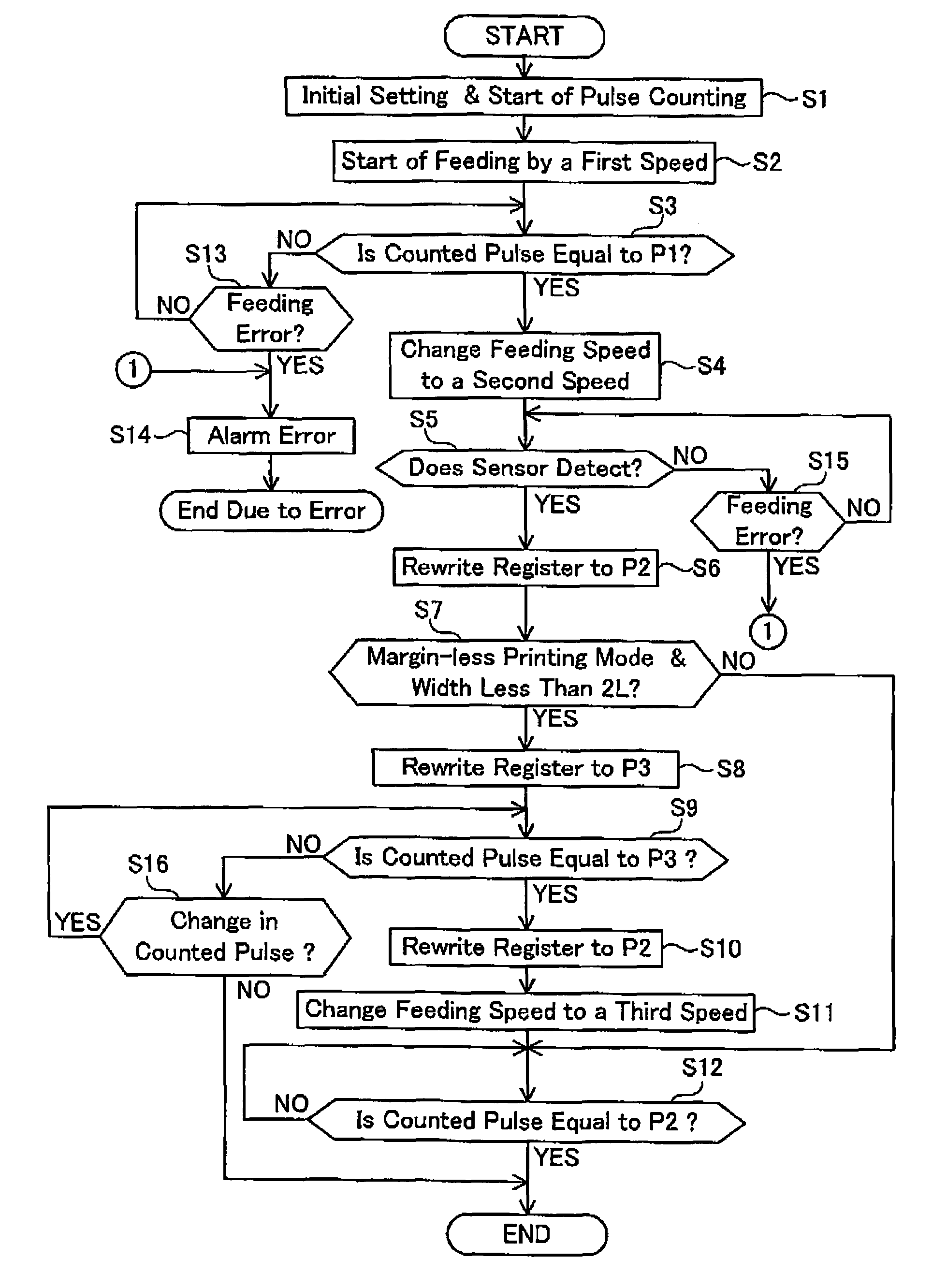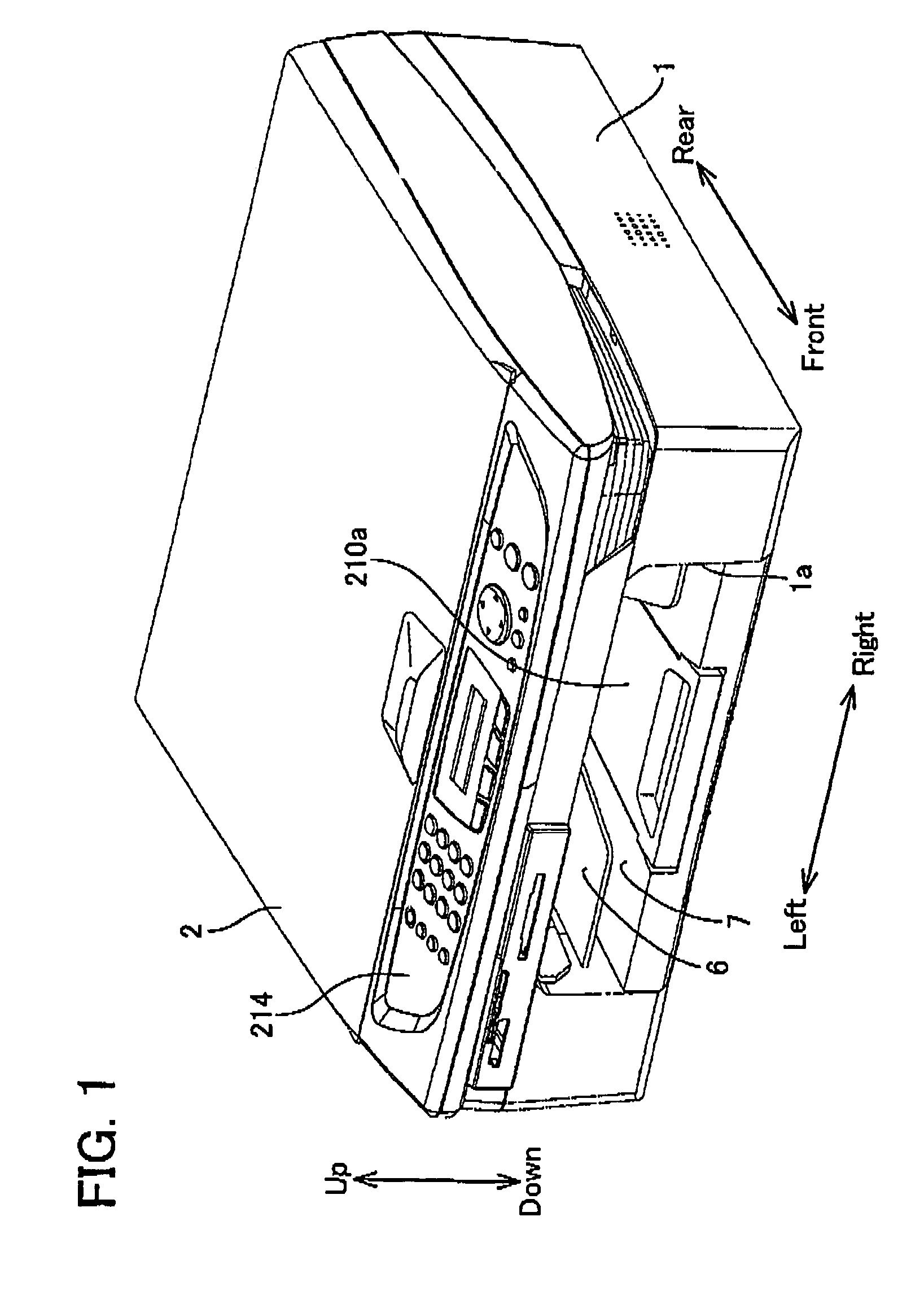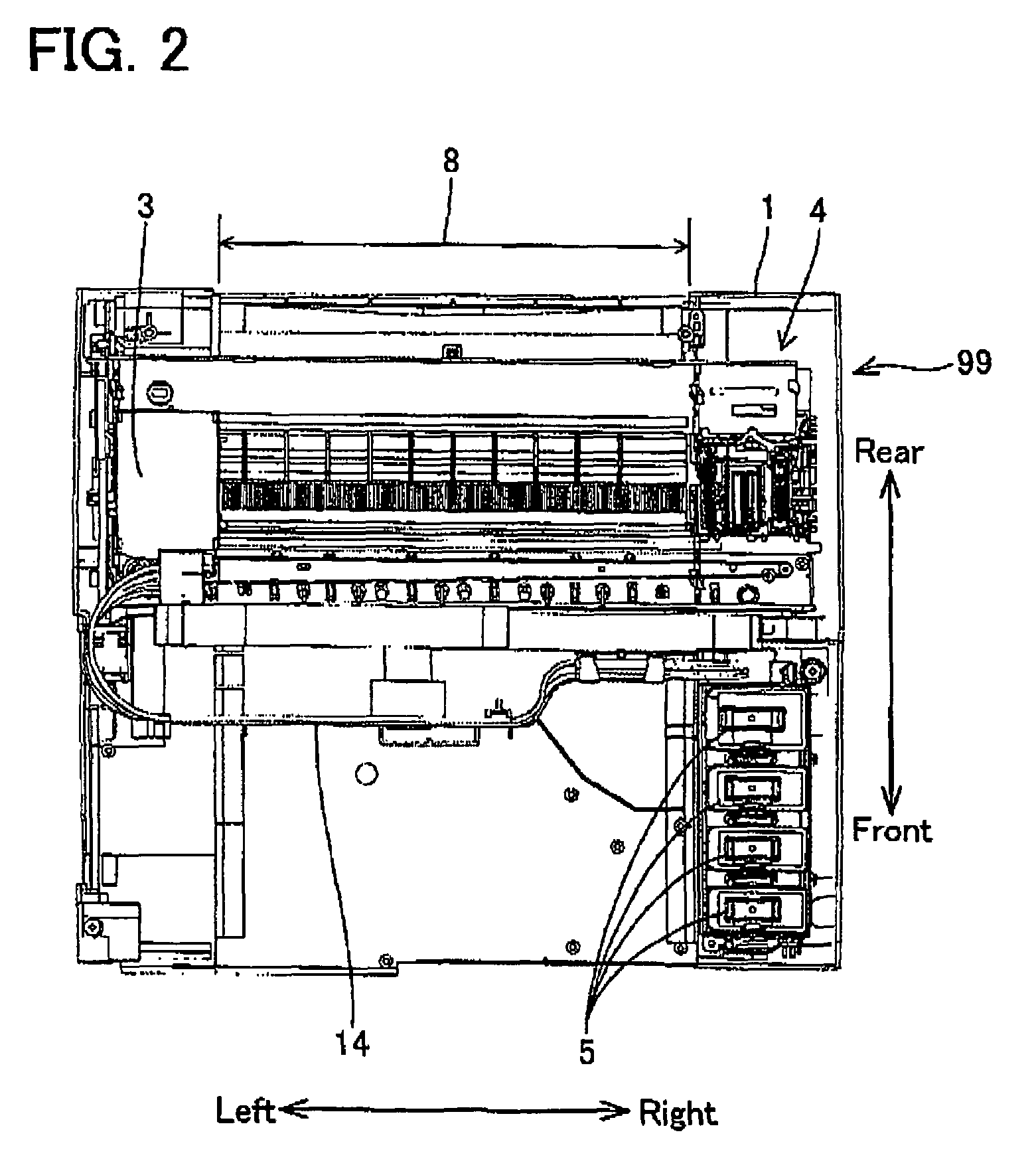Method and apparatus for controlling the sheet feeding speed in a printer
a printing machine and feeding speed technology, applied in the field of printing machines, can solve the problems of not considering differences, unnecessarily longening and the time required to print becomes longer, so as to reduce the feeding speed and reduce the feeding speed
- Summary
- Abstract
- Description
- Claims
- Application Information
AI Technical Summary
Benefits of technology
Problems solved by technology
Method used
Image
Examples
Embodiment Construction
[0037]A multifunctional device incorporating a printer practicing the present invention will be explained with reference to the figures.
[0038]The multifunctional device (abbreviated as MFD hereinafter) of the present embodiment provides a printing function, copying function, scanning function, and facsimile function. As shown in FIG. 1 and FIG. 3, image reading device 2 for the copying function or the scanning function is set up on an upper surface of main body frame 1 made of plastic injection molding item. Internally of the MFD, printer 99 is incorporated in a position below image reading device 2.
[0039]As shown in FIG. 2 and FIG. 3, printer 99 provides carriage 3, movable in a round-trip fashion in a right-left direction. As shown in FIG. 3, printing head 10, which prints images or characters, is fixed on carriage 3. As shown in FIG. 2, printer 99 provides maintenance unit 4, and maintenance unit 4 recovers the clogging of nozzles of printing head 10. Ink tank 5 to supply ink to ...
PUM
 Login to View More
Login to View More Abstract
Description
Claims
Application Information
 Login to View More
Login to View More - R&D
- Intellectual Property
- Life Sciences
- Materials
- Tech Scout
- Unparalleled Data Quality
- Higher Quality Content
- 60% Fewer Hallucinations
Browse by: Latest US Patents, China's latest patents, Technical Efficacy Thesaurus, Application Domain, Technology Topic, Popular Technical Reports.
© 2025 PatSnap. All rights reserved.Legal|Privacy policy|Modern Slavery Act Transparency Statement|Sitemap|About US| Contact US: help@patsnap.com



